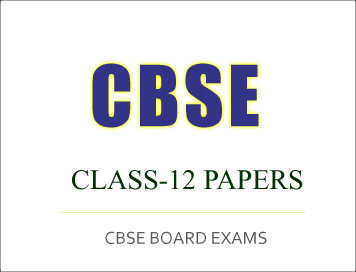CBSE Class-12 Question Papers for IOP/Comptt Examination 2017 : All India Scheme, Agriculture
Disclaimer: This website is NOT associated with CBSE, for official website of CBSE visit - www.cbse.gov.in

CBSE Class-12 Question Papers for IOP/Comptt Examination 2017 :
All India Scheme, Agriculture
CBSE Class-12 Question Papers for IOP/Comptt Examination 2017 : Agriculture
• Please check that this question paper contains 4 printed pages.
• Code number given on the right hand side of the question paper should be written on the
title page of the answer-book by the candidate.
• Please check that this question paper contains 14 questions.
• Please write down the Serial Number of the question before attempting it.
• 15 minute time has been allotted to read this question paper. The question paper will be
distributed at 10.15 a.m. From 10.15 a.m. to 10.30 a.m., the students will read the
question paper only and will not write any answer on the answer-book during this period.
AGRICULTURE (Theory)
Time allowed : 3 hours
Maximum Marks : 70
General Instructions :
(i) All questions are compulsory.
(ii) Marks for questions are indicated against each of them.
1. Write in brief about the following :
(i) Black cotton soil
(ii) Organic farming in National Economy
(iii) Two major green manuring crops
(iv) Soil solarization method of Weed control
(v) Diammonium phosphate – as a fertilizer
2. Fill in the blanks :
(a) _______ is the cultural practice of a crop field, where after the harvest of the first crop, second crop is sown without land preparation.
(b) Organic farming contribute ______ in the national economics of the country.
(c) Kitchen gardens are mostly used to grow ______ and _______ crops.
(d) If monsoon rains are normal in Kharif season, then the barani crops of ______season may also be benefitted.
(e) Bihar State grow Rabi-Maize in large area, similarly Rabi-Sorghum is grown in ______ State
3. I.C.A.R.’s two Research Institutes on Sugarcane crop are situated in Coimbatore (Tamil Nadu) and Lucknow (U.P.). On what different aspects these institutes are working ?
4.Two foreign dwarf wheat varieties (Sonora-64 & Lerma Rojo) contributed a lot in first “Green Revolution” of India. Name the country from where these varieties were imported. Name the scientist under whom the team of scientists developed dwarf, high
yielding varieties of wheat. Name two varieties of such developed wheat.
5. Write the names of improved varieties, seed rate and yield per hectare of the produce from Haryana.
6. How are acidic and alkaline soils reclaimed for agriculture purposes ? Write in brief.
7. Can agriculture be commercialized in India ? If the answer is yes, how ? Discuss.
8.Differentiate between the following :
(i) Annuals and perennials in a garden
(ii) Trees and Shrubs
(iii) Grafting and layering
(iv) Roses and Gladiolus
(v) Inter-cropping and sole cropping in vegetables
9. Write in brief about the cultivation practices in carrot and cauliflower.
10. How is canning beneficial for fruit and vegetable marketing ? Write in brief.
11.Write in brief on the following :
(i) Role of fruits and vegetables in human diet in relation to nutritive value.
(ii) Out-off reason cultivation of summer squash.
12.Write in brief about nutritive value of ripe banana and uses of marigold flowers.
13.Write in brief about vegetable preservation. Name two important “fruit-preservatives”.
14. Timely change in a well recognized cropping patterns of India through “Crop Diversification” has been proved to be more advantageous. How ? Write in brief.